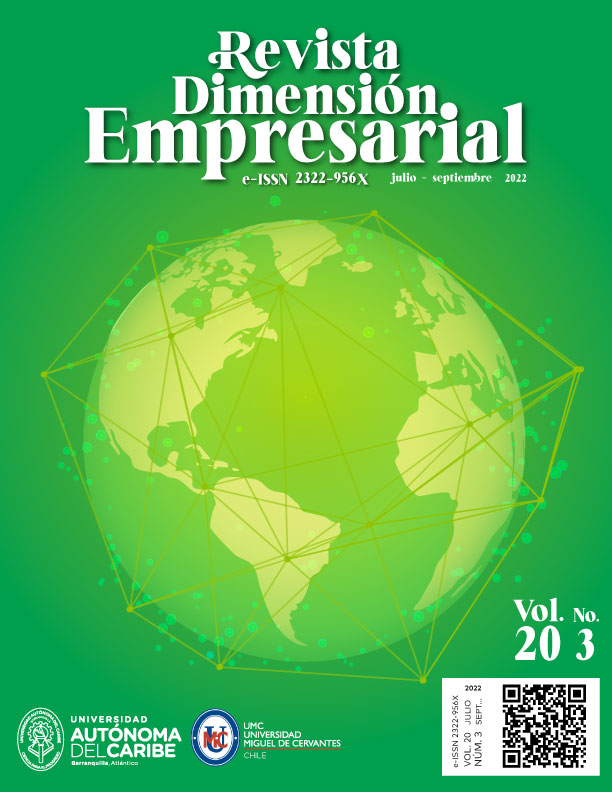Reintegração vertical da Cadeia de Valor na indústria da mobilidade elétrica: inovação e investimento em componentes críticos, mineração e geoestratégia
DOI:
https://doi.org/10.15665/dem.v20i3.3052Palavras-chave:
Cadeia de valor, indústria automotiva, veículo elétrico, bateriasResumo
O artigo analisa as implicações da integração da mobilidade do veículo eletrificado e o consequente impacto na cadeia de valor global. Através da técnica Follow the Money, revela-se a mudança na tendência das cadeias de valor para a reintegração vertical dos processos de obtenção de matérias-primas pelos fabricantes. Neste contexto, as empresas ligadas à obtenção de matérias-primas essenciais e componentes de reciclagem estão a posicionar-se nos níveis mais elevados da cadeia de valor. Ao mesmo tempo, essas empresas estão sendo compradas pelos principais fabricantes para manter o controle sobre o fornecimento de componentes, inovação tecnológica e poder de decisão. Os resultados obtidos revelam a importância do apoio governamental às empresas associadas à mineração sustentável, inovação e eletrificação de veículos, uma vez que constituem um efeito trator da indústria e da riqueza.
Referências
Ameen H. A., Mahamad, A. K., et al. (2019). A deep review and analysis of data exchange in vehicle-to-vehicle communications systems: coherent taxonomy, challenges, motivations, recommendations, substantial analysis and future directions, IEEE Access, 7, 158349-158378. https://doi.org/10.1109/ACCESS.2019.2949130.
Automotive New Europe (2022). EuroStellantis takes $52 million stake in sustainable lithium miner Vulcan Energy. Disponible en: https://europe.autonews.com/automakers/stellantis-takes-52-million-stake-sustainable-lithium-miner-vulcan-energy#:~:text=PARIS%20%2D%2D%20Stellantis%20has%20taken,with%20zero%20greenhouse%20gas%20emissions. (Acceso: 5 Agosto de 2022).
Berger, S. L. T., Tortorella, G. L., & Rodríguez, C. M. T. (2018). Lean supply chain management: a systematic literature review of practices, barriers and contextual factors inherent to its implementation. In: Davim, J. (Ed.), Progress in lean manufacturing. Management and industrial engineering, Springer: Cham. https://doi.org/10.1007/978-3-319-73648-8_2
Bonsu, Nana O. (2020). Towards a Circular and Low-Carbon Economy: Insights from the Transitioning to Electric Vehicles and Net Zero Economy. Journal of Cleaner Production, 256, 120659. https://doi.org/10.1016/j.jclepro.2020.120659
Desert Sun (2022). Electric vehicle maker Stellantis will buy lithium produced at Salton Sea. Disponible en: https://eu.desertsun.com/story/news/environment/2022/06/02/stellantis-buy-lithium-produced-salton-sea-controlled-thermal-resources/7483424001/ (Acceso: 5 Agosto de 2022).
EC, (2016). European Commission. A European Strategy for Low-Mission Mobility. Brussels. Disponible en: https://ec.europa.eu/clima/policies/transport_en. (Acceso: 5 Agosto de 2022).
EC, (2017). European Commission. List of Critical Raw Materials for the EU. Disponible en: https://ec.europa.eu/transparency/regdoc/rep/1/2017/EN/COM-2017-490-F1-EN-MAIN-PART-1.PDF. (Acceso: 5 Agosto de 2022).
EC, (2018). European Commission. European Innovation Partnership on Raw Materials: Raw Materials Scoreboard. Disponible en: https://publications.europa.eu/en/publication-detail/-/publication/117c8d9b-e3d3-11e8-b690-01aa75ed71a1. (Acceso: 5 Agosto de 2022).
Faro de Vigo (2022). Stellantis se alía con la viguesa Little para crear cargadores ultrarrápidos de baterías. Disponible en: https://www.farodevigo.es/economia/2022/07/22/stellantis-alia-viguesa-little-crear-68660605.html (Acceso: 5 Agosto de 2022).
France24 (2022). EU Parliament approves ban on new fossil-fuel cars from 2035. Disponible en: https://www.france24.com/en/europe/20220609-eu-parliament-approves-ban-on-new-fossil-fueled-cars-by-2035 (Acceso: 5 Agosto de 2022).
Frederick, S., (2014). Combining the Global Value Chain and global IO approaches. In Centre on Globalization, Governance & International Conference on the Measurement of International Trade and Economic Globalization Aguascalientes, Mexico (Vol. 29)
Frigant, V. & Layan, J.B. (2009). Modular production and the new division of labour within Europe: the perspective of French automotive parts suppliers, European Urban and Regional Studies, 16(1), 11-25.
Globisch, J., Plötz, P., Dütschke, E., & Wietschel, M. (2019). Consumer preferences for public charging infrastructure for electric vehicles. Transport Policy, 81, 54-63. https://doi.org/10.1016/j.tranpol.2019.05.017
Groh, A. P. (2010). The Capital Flow from Institutional Investors to Entrepreneurs. https://www.strategy-business.com/article/10217d (Accessed: 19 August 2022).
Herring, P., Balaji Gopal, C., Aykol, M., Montoya, J. H., Anapolsky, A., Attia, P. M., Gent, W., Hummelshøj, J. S., Hung, L., Kwon, H.-K., Moore, P., Schweigert, D., Severson, K. A., Suram, S., Yang, Z., Braatz, R. D., Storey, B. D. & Storey, B. D. (2020). BEEP: A python library for battery evaluation and early prediction. SoftwareX, 11, 100506. https://doi.org/10.1016/j.softx.2020.100506
Huang, Y., Han, W. & Macbeth, D. K. (2020). The complexity of collaboration in supply chain networks, Supply Chain Management, 25(3), 393-410. https://doi.org/10.1108/SCM-11-2018- 0382
Husain, I., (2010). Electric and Hybrid Vehicles: Design Fundamentals, 2nd ed.; CRC Press: Boca Raton, FL, USA.
Jürgens, U. & Krzywdzinski, M. (2009). Changing east-west division of labour in the European automotive industry, European Urban and Regional Studies, 16 (1), pp. 27-42
Karlan, D., Osman, A., & Zinman, J. (2016). Follow the money not the cash: Comparing methods for identifying consumption and investment responses to a liquidity shock. Journal of Development Economics, 121, 11–23. https://doi.org/10.1016/j.jdeveco.2015.10.009
Kchaou-Boujelben, M., & Gicquel, C. (2020). Locating electric vehicle charging stations under uncertain battery energy status and power consumption. Computers & Industrial Engineering, 149, 106752. https://doi.org/10.1016/j.cie.2020.106752
Kurzweil, P., & Garche, J. (2017). Overview of batteries for future automobiles. Lead-Acid Batteries for Future Automobiles, 27–96. https://doi.org/10.1016/b978-0-444-63700-0.00002-7
Lagadic, M., Verloes, A. & Louvet, N. (2019). Can carsharing services be profitable? A critical review of established and developing business models, Transport Policy, 77, 68-78. https://doi.org/10.1016/j.tranpol.2019.02.006
Lampón, J. F., Cabanelas, P. & Delgado-Guzmán, J. A. (2018). Keys in the evolution of Mexico within the global value chain in the automobile components industry: The case of Bajio, El Trimestre Económico, 85(3), 483-514. https://doi.org/10.20430/ete.v85i339.259.
Lampón, J. F., Lago-Peñas, S. & Cabanelas, P. (2016). Can the periphery achieve core? The Case of the automobile components industry in Spain, Papers in Regional Science, 95(3): 595-612. https://doi.org/10.1111/pirs.12146
Lampón, J.F., Lago-Penas, S. & González-Benito, J. (2015). International relocation and production geography in the European automobile components sector: the case of Spain, International Journal of Production Research, 53(5), 1409-1424
Masiero, G., Ogasavara, M. G., Jussani, A. C., and Risso, M. L., (2017). The global value chain of electric vehicles: a review of the Japanese, South Korean and Brazilian cases. Renewable and Sustainable Energy Reviews, 80, 290‐296.
McTaggart, N. A. (2017). Follow the money to achieve success: Achievable or aspirational. Journal of Financial Crime, 24(3), 425–436. https://doi.org/10.1108/jfc-03-2017-0022
Nelson, P., Santini, D. & Barnes, J., (2009). Factors determining the manufacturing costs of lithium-ion batteries for PHEVs. World Electric Vehicle Journal, 3(3), 457-468.
Nitta, N., Wu, F., Lee, J. T., & Yushin, G., (2015). Li-ion battery materials: present and future. Materials today, 18(5), 252-264.
Pavlínek, P. & Zenka, J. (2016). Value creation and value capture in the automotive industry: empirical evidence from Czechia, Environment and Planning A, 48(5), 937-959. https://doi.org/10.1177/0308518X15619934
Pelegrín, A. & García-Quevedo, J. (2012). Which firms are involved in foreign vertical integration?. Barcelona Institute of Economics (IEB), Working Paper 2012/38, Barcelona.
Ponte, S., Gereffi, G. & Raj-Reichert, G. (2019), Handbook on Global Value Chains, Edward Elgar Publishing, Cheltenham
Pütz, F., Murphy, F., Mullins, M., & O'Malley, L. (2019). Connected automated vehicles and insurance: Analysing future market-structure from a business ecosystem perspective, Technology in Society, 59, 101182. https://doi.org/10.1016/j.techsoc.2019.101182
Rodríguez-De La Fuente, M. & Lampón, J. F. (2020). Regional upgrading within the automobile industry global value chain: the role of the domestic firms and institutions, International Journal of Automotive Technology and Management, 40(3), 319-340. https://doi.org/10.1504/IJATM.2020.110409
Shah, S., Murali, M., & Gandhi, P. (2019). Platform software development for battery management system in electric vehicle. In 2019 IEEE international conference on sustainable energy technologies (ICSET). https://doi.org/10.1109/icsets.2019.8744886
Sonter, L.J., Dade, M.C., Watson, J.E.M. et al. (2020). Renewable energy production will exacerbate mining threats to biodiversity. Nature Communications, 11, 4174. https://doi.org/10.1038/s41467-020-17928-5
Sripad, S., & Viswanathan, V. (2017). Performance metrics required of next-generation batteries to make a practical electric semi truck. ACS Energy Letters, 2(7), 1669–1673. https://doi. org/10.1021/acsenergylett.7b00432
Sturgeon, T.J., Van Biesebroeck, J. & Gereffi, G. (2008). Value chains, networks and clusters: reframing the global automotive industry, Journal of Economic Geography, 8(3), 297-321. https://doi.org/10.1093/jeg/lbn007
Tracxn (2021). Global Startup Data Platform. Disponible en: https://tracxn.com/
Turienzo, J., Cabanelas, P., & Lampón, J. F. (2022). The Mobility Industry Trends Through the Lens of the Social Analysis: A Multi-Level Perspective Approach. Sage Open, 12(1). https://doi.org/10.1177/21582440211069145
Turienzo, J., Lampón, J. F. & Cabanelas, P., (2022c). El impacto del vehículo autónomo, conectado y compartido: de la industria automotriz tradicional a la cadena de valor de la nueva movilidad. Revista Dimensión Empresarial, 20(1), 1-21. DOI: https://doi.org/10.15665/dem.v20i1.2775
Turienzo, J., Lampón, J. F., Chico-Tato, R. & Cabanelas, P. (2022b). Electric Cars: The Future Technological Potential. In Parkhurst, G. & Clayton, W. (Eds.), Electrifying Mobility: Realising a Sustainable Future for the Car. Electrifying Mobility, 15, 191–209. Emerald Publishing Limited. https://doi.org/10.1108/S2044-994120220000015012
Turienzo, J. & Lampón, J. F. (2022). New mobility technologies as incentive to location decisions: relocation strategies in the automotive industry. Kybernetes, 51 (13) https://doi.org/10.1108/K-03-2022-0317
Turner, C., Di Tommaso, M. R., Pollio, C., & Chapple, K. (2020). Who will win the electric vehicle race? The role of place-based assets and policy. Local Economy, 35(4), 337–362. https://doi.org/10.1177/0269094220956826
Van Velzen, A., Annema, J. A., van de Kaa, G., & van Wee, B. (2019). Proposing a more comprehensive future total cost of ownership estimation framework for electric vehicles. Energy Policy, 129, 1034–1046. https://doi.org/10.1016/j.enpol.2019.02.071
Zhao, Z., Fan, X., Ding, J., Hu, W., Zhong, C., & Lu, J. (2019). The challenges in zinc electrodes for rechargeable alkaline zinc–air batteries: obstacles to commercialization. ACS Energy Letters. 4 (9), 2259–2270 https://doi.org/10.1021/acsenergylett.9b01541
##submission.downloads##
Publicado
Como Citar
Edição
Secção
Licença
Direitos de Autor (c) 2022 Javier Turienzo Riveiro

Este trabalho encontra-se publicado com a Licença Internacional Creative Commons Atribuição-NãoComercial-SemDerivações 4.0.
Os autores mantêm todos os direitos a que têm direito e autorizadas com a sua reprodução de assinatura gratuita do documento enviado ou, no caso se necessário, assumirá, ao assinar o Certificado de Originalidade e Cessão de Direitos, o registro de ter a autoridade para a transferência de direitos de propriedade que estão livres devido a nenhum custo para qualquer procedimento do Dimensión Empresarial.
Instruções para preenchimento Originalidade Certificação e Transferência de Direitos de autor.
1. Clique aqui e tenha a originalidade da forma Certification and Copyright Assignment.
2. No formulário baixo, clique em cada um os campos e preencha os correspondentes.
3. Uma vez que os campos estão preenchidos, copie o fim sua assinatura digitalizada ou assinatura digital. Por favor, ajustar o tamanho da assinatura no formulário.
4. O formulário deve ser assinado por todos os autores.
5. Finalmente, salvá-lo como PDF e enviá-lo através da plataforma OJS como arquivo suplementar ou correio revistadimensionempresarial@uautonoma.edu.co.
Se você tiver dúvidas contate-nos, por favor.



